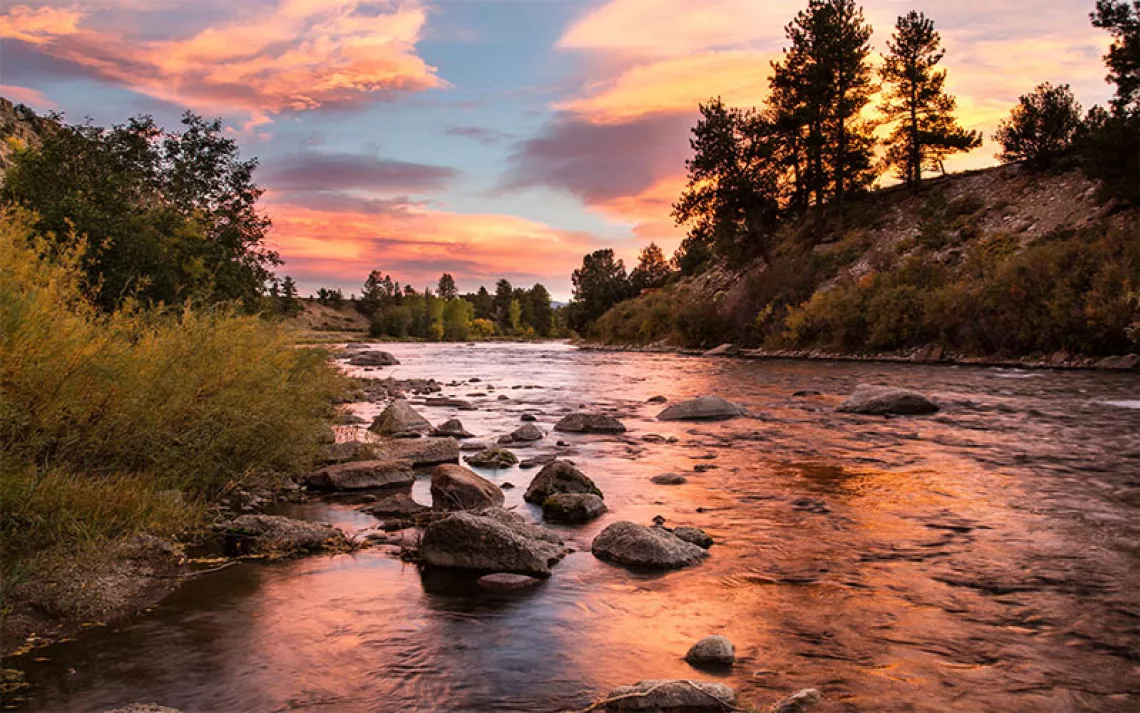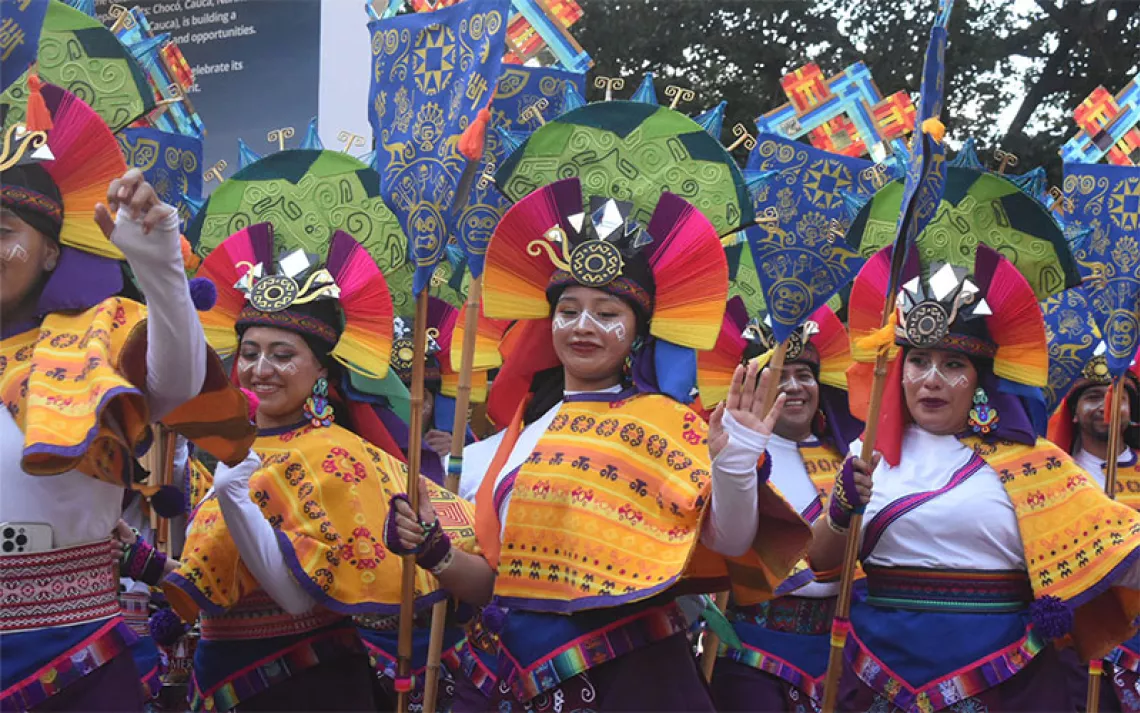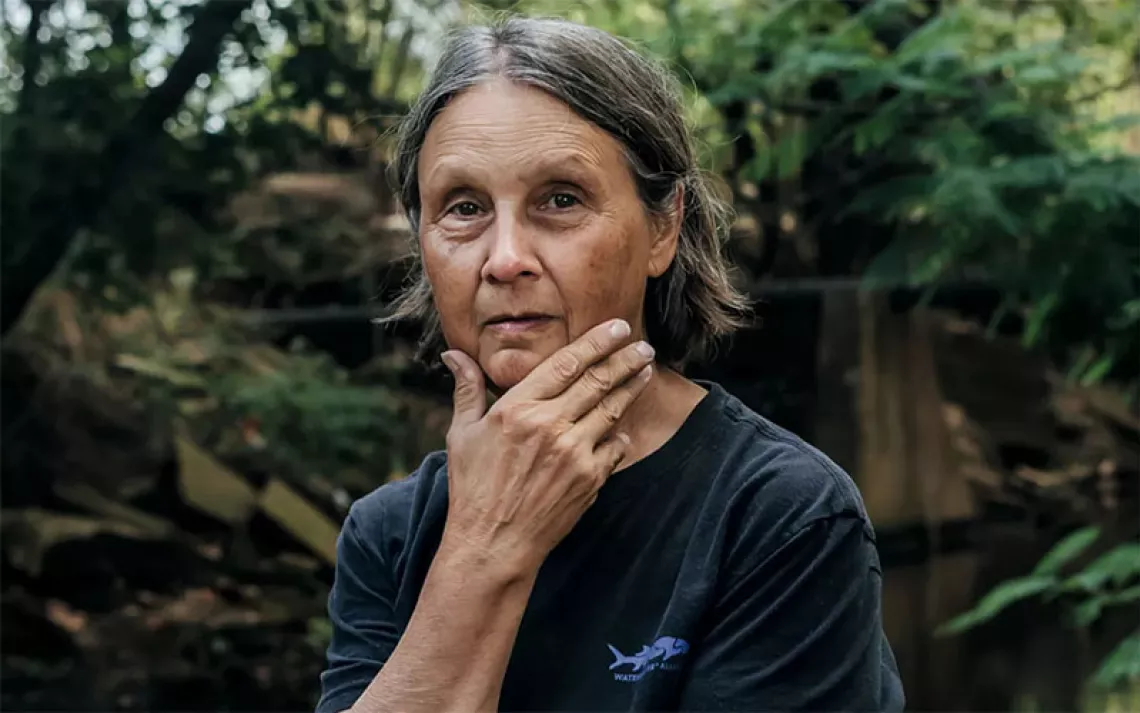Indigenous-Led Tourism Alliances Are Taking Back Recreation on Their Land
They say that, done right, Indigenous tourism can also be a form of reconciliation
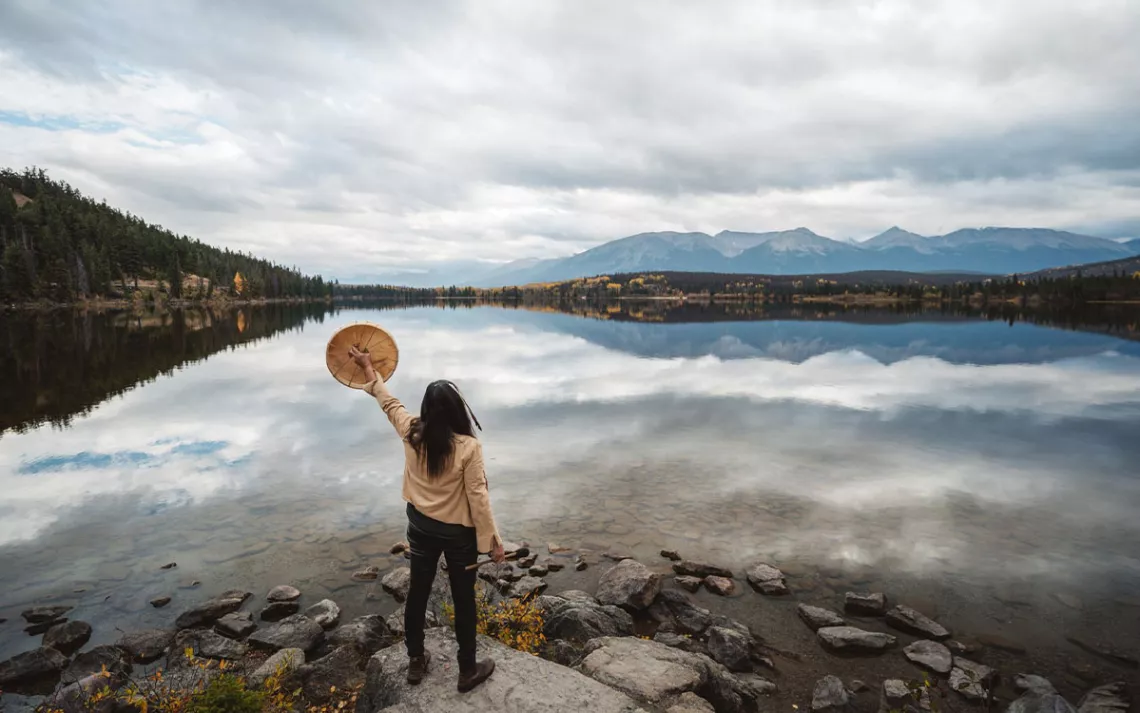
A warrior woman in Jasper, Alberta. | Photo courtesy of Indigenous Tourism Alberta
Some 40 miles northeast of Reno, Nevada, lies a lake named after the pyramidal rock formations that surface through its light-turquoise waters. The largest remnant of ancient Lake Lahontan, today Pyramid Lake draws visitors from across the United States and the world, who come to fish its Lahontan cutthroat trout, narrowly brought back from the brink of extinction, and its cui-ui fish, found nowhere else in the world.
The lake is on Pyramid Lake Paiute tribal land, but it’s Reno that enjoys the majority of the benefits stemming from the lake’s tourism.
“When visitors come to Nevada, they fly into Reno. Pyramid Lake doesn’t have any hotels, so people stay in Reno—they rent their vehicles there, fuel their vehicles there, and dine there,” explains Sherry Rupert, CEO of the American Indian Alaska Native Tourism Association (AIANTA).
Anglers have to purchase a permit from the tribe, but outside of that, “if they have time, visitors might stop at the cultural center there and donate five bucks,” Rupert says. “So the tribe really isn’t benefiting from people coming out to the lake."
Ensuring that Indigenous communities are both leading and benefiting from the tourism of their lands and cultures—a $40 billion market projected to grow to $65 million by 2032—is what drives the work of organizations like Rupert’s. Proponents of Indigenous tourism see it as an opportunity for economic sovereignty as well as an avenue for cultural resurgence, historical truth, and even reconciliation with settler nations.
“Because of the colonial experience and because a lot of tourism has historically been imposed upon Indigenous communities, tourism can be a sensitive thing across many Indigenous communities. However, I think we’re in quite a different generation where it’s being indigenous led,” explains Bobbie Chew Bigby, a postdoctoral research fellow at University of Waterloo in Canada. “Tourism is one of the very few ways that you are able to kind of exist within and navigate both worlds.”
Frank Kills In Water, the acting board chair of the South Dakota Native Tourism Alliance (SDNTA), sees things similarly. “For Lakota people, if you want to think of our way of life as an economy, the buffalo was an integral part of it. When the buffalo was decimated, so was our economy,” he says. “Fast-forward to now, we need a new economy ... because the buffalo we now chase is rectangular, green, and fits in your wallet.”
One of SDNTA’s goals is to create economic opportunities for Indigenous people that stem from their cultural identity—everything from speaking their native language to doing quillwork and beadwork to making a buckskin dress, moccasins, and more.
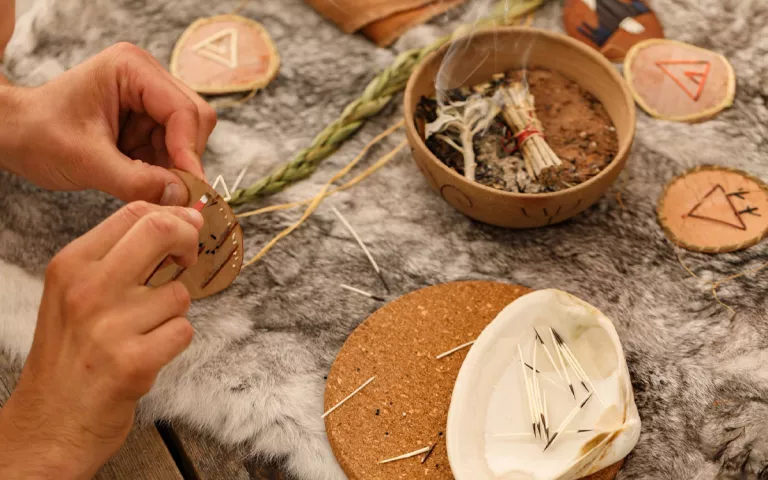
Indigenous craftwork from Prince Edward Island. | Photo by Brady McCluskey
Another goal of the Indigenous-led tourism effort is to ensure that Indigenous histories are told truthfully, and that storytelling is conveyed appropriately. “Our stories shouldn’t be told without us. Those stories have been passed down for generations, so it’s important to hear those stories directly from our people, from our culture,” Rupert says. “Data shows that travelers are interested in authenticity. What could be more authentic than hearing from the people of that place, who are connected in so many different ways to that land?”
A lack of access to a central source of funding that the mainstream tourism industry enjoys is one challenge that Indigenous-led tourism efforts face.
Across the US, the tourism industry is largely funded by tourism taxes imposed on tourist-centric activities and services, such as lodging, car rentals, and parking. However, this approach doesn’t work for reservations that don’t have these “standard” tourism accoutrements to tax. Tribes that do have amenities like hotels decide how to use the revenue they generate, often funneling them to meet broader and perhaps more pressing community needs rather than reinvesting in tourism. If tribes don’t contribute room taxes to state or municipal tourism funds, the destination management organizations tend to leave tribes out of those funds’ spending.
One major need AIANTA has identified through internal surveys of its members is technical assistance around marketing, specifically how it works and how to do it. Businesses carrying out Indigenous-led tourism range from entrepreneurs and mom-and-pop outfits to start-ups, growth-phase companies, and others eyeing international markets. AIANTA analyzes data from the US Department of Commerce’s National Travel and Tourism Office and partners with organizations like Brand USA, the country’s destination marketing organization, to help its varied members hone in on and reach their unique markets.
Last year, the Indigenous Tourism Association of Canada (ITAC) launched its Original Original campaign. It’s simultaneously a marketing effort to bolster genuine Indigenous tourism across the country and a verification system that signals the authenticity of the businesses that sport its logo. To display the Original Original seal, businesses have to be at least 51 percent Indigenous-owned and have a product, service, or experience that’s currently available.
“We also created an Indigenous tourism destination fund,” explains Keith Henry, ITAC’s president and CEO. Participating companies put 25 cents per transaction into the fund with the goal of ultimately collecting $2.6 billion. Launched in September 2023, 30 companies have already signed on to participate in the program, with another 40 or so waiting to be accepted. “We’re bringing everyone into the tent with all sorts of tactics. I’m not saying it’s perfect, but it seems to really help bring the industry together to understand the importance of aligning on these interests,” Henry says.
However, ITAC’s fund has raised just $232,000 to date. This, Henry says, is due to budget cuts ITAC has faced that stem from a lack of both federal funding and provincial and industry support. To close the $3.1 million shortfall that’s keeping it from tracking toward its goal, ITAC is “calling on our federal government partners, including Indigenous Services Canada and Innovation, Science, and Economic Development Canada, to support us in obtaining our goal.”
Partnerships between Indigenous tourism organizations and state tourism departments also have an important role to play. In South Dakota, the Black Hills—which the US government illegally seized from the tribes that settlers dubbed Sioux over a century ago—are a central draw for tourism. As far as SDNTA’s partnership with Travel South Dakota goes, Kills In Water says “it’s a form of reconciliation” to help Indigenous communities get a fair slice of the economic pie that their sacred land generates.
“My vision is that in the next five years, Indigenous tourism will be top of mind for everyone when they’re traveling around the world,” Rupert says. “And that they’ll make a concerted effort to go somewhere that’s Indigenous.”
 The Magazine of The Sierra Club
The Magazine of The Sierra Club
